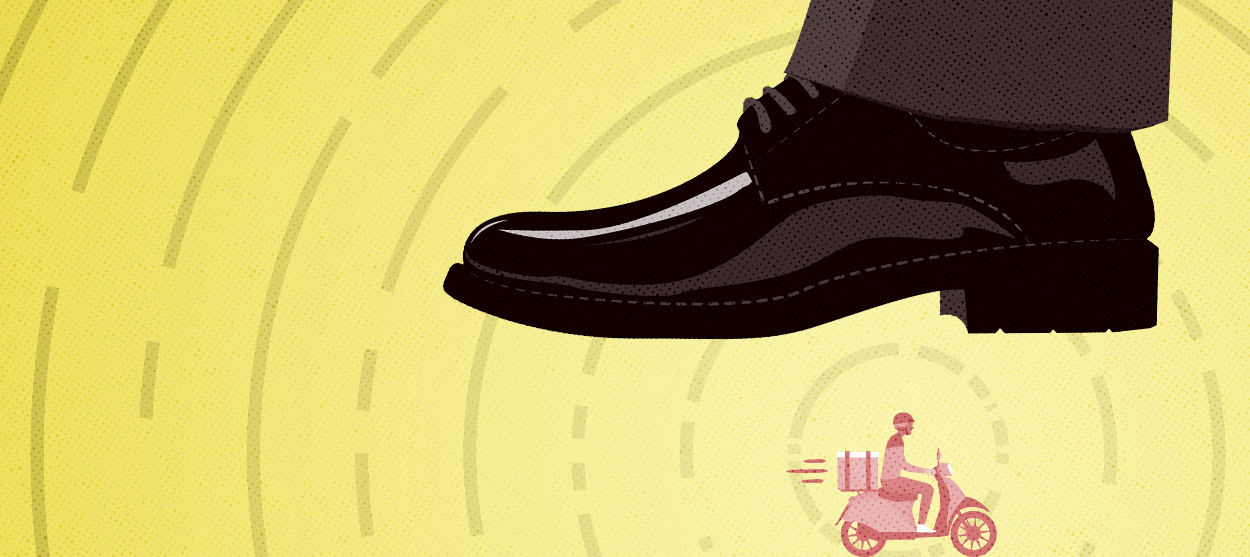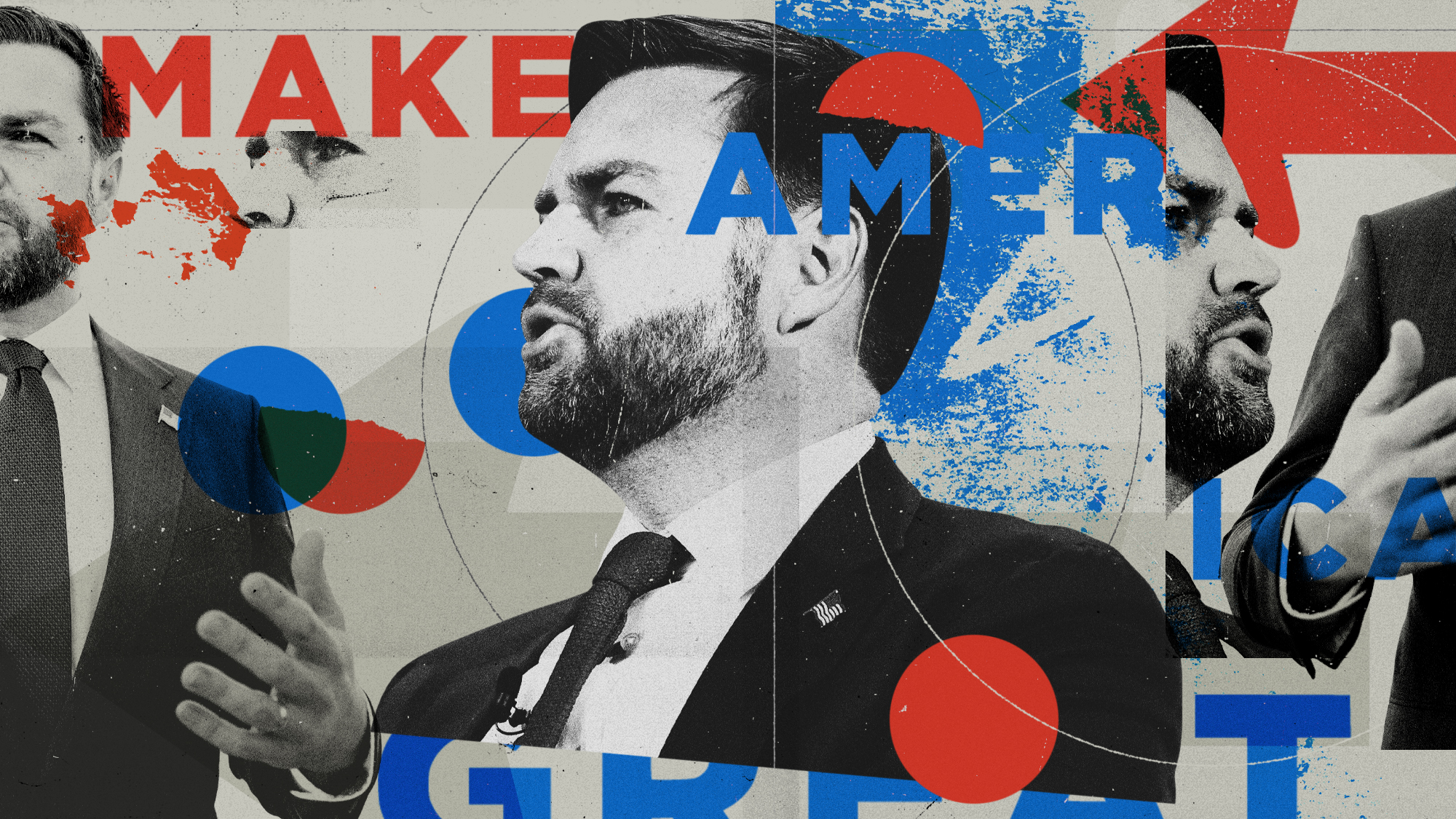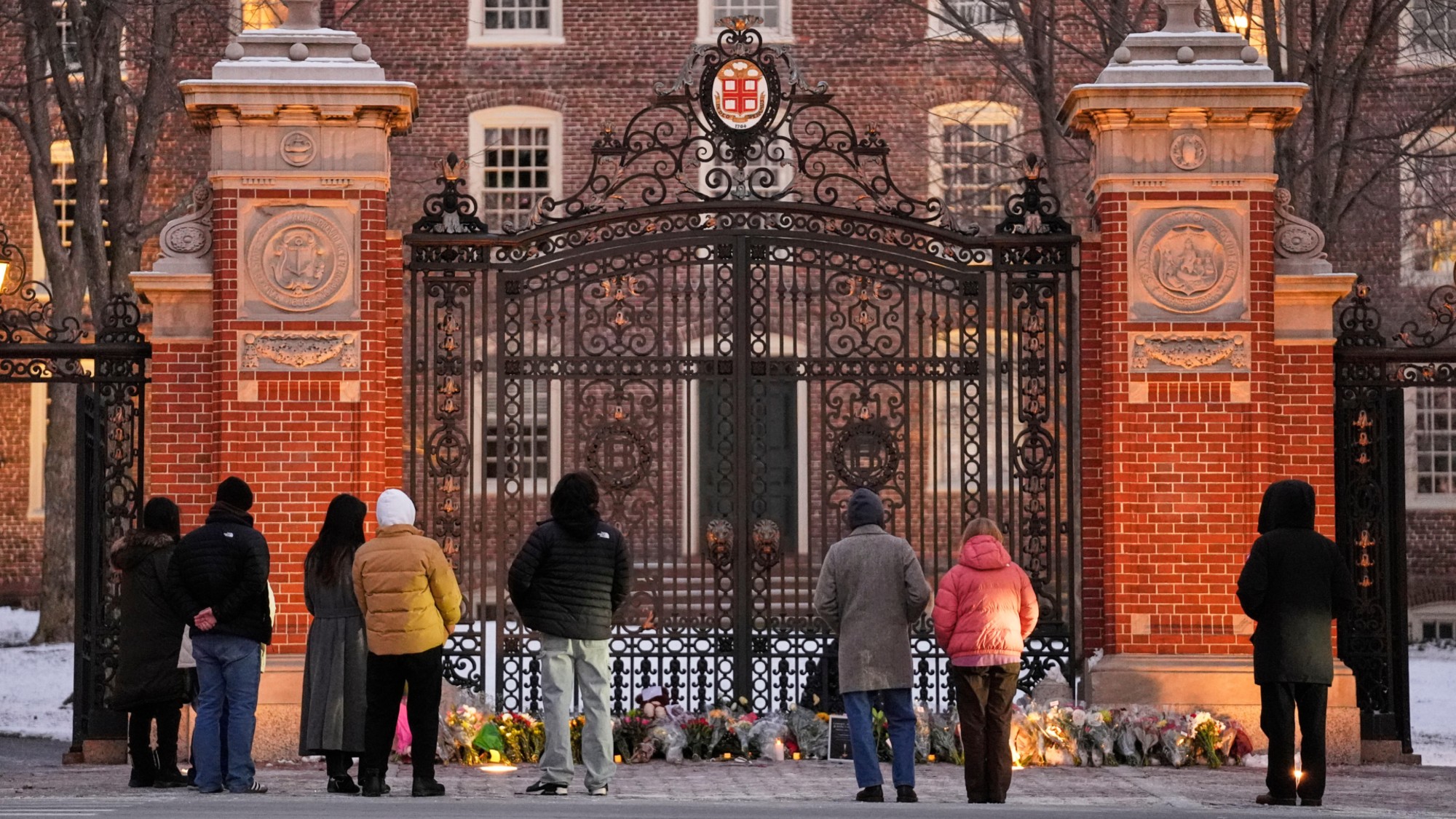Coronavirus and the uncomfortable calculus of the gig economy
What is your grocery delivery worth?


In this incredibly strange, unnerving moment in history, we are all engaged in weird little games of calculus. For me, tasked with looking after my elderly parents, a once simple decision has suddenly become complicated: how to best get groceries?
Recently, following guidelines from various authorities, I used Instacart to get things delivered. When the Instacart worker dropped off the bags on my folks' porch, I donned a pair of bright yellow dishwashing gloves to bring them inside. I am reasonably sure he saw this from his car. I felt awful.
The decision I had implicitly made was this: It was better for the Instacart worker to expose himself to risk in a grocery store than it was my 73-year-old mother or, for that matter, me.
The Week
Escape your echo chamber. Get the facts behind the news, plus analysis from multiple perspectives.

Sign up for The Week's Free Newsletters
From our morning news briefing to a weekly Good News Newsletter, get the best of The Week delivered directly to your inbox.
From our morning news briefing to a weekly Good News Newsletter, get the best of The Week delivered directly to your inbox.
This is what the COVID-19 phenomenon has revealed: the workers of the gig economy are used to offload inconvenience, hardship — and now, risk. And as those who work for Instacart, Uber, and others are now agitating around that fact, and even going on strike as a result, perhaps it's time for a renewed labor movement — one that takes up the precariousness of these workers as its main cause.
After all, among the stranger things about the gig economy is that, for all its shiny rhetoric about modernity and freedom, it has produced an army of workers who live in a kind of Dickensian hardship. Cities across the continent are filled with people sweating on bicycles delivering food, or in cars inching their way through snow or traffic to drop off groceries to people in large detached homes. Pay is low — often hovering just near minimum wage — while protections and benefits are mostly non-existent, thanks to companies fighting tooth and nail not to classify these workers as traditional employees.
It betrays an uncomfortable reality, but one that should be clear by now: the convenience of the gig economy in which a burger and fries can just show up at your door is predicated on the physical labor of poorly paid workers.
But the current situation has made this reality far more troubling because, in addition to hardship and precarity, workers are now the ones assuming the risk inherent during a pandemic, exposing both themselves and their families and loved ones to infection. Moreover, given the comparatively low wages, it is not as if they can simply stop working, or apply for government benefits; instead they are trapped between poverty and risk.
A free daily email with the biggest news stories of the day – and the best features from TheWeek.com
It's for this reason that Instacart workers, for example, organized a strike at the end of March, to insist upon hazard pay and better safety practices for the company in general.
It's a heartening moment. But alas, the nascent movement faces two problems. Firstly, with demand for these services up, and so many people in restaurants and other industries out of work, companies are on a hiring spree which may drown out any labor uprising. Secondly, Instacart has a valuation of about 8 billion dollars, while Uber's market cap is 43 billion dollars. Meanwhile, though some of Amazon's warehouse workers are also protesting their current working conditions, that company is worth over a trillion. With resources like that, resisting both their firepower and their ability to just keep hiring more people is incredibly difficult.
Ironically, what the era of the virus has also highlighted is that, in the abstract, not all ideas related to the new gig economy are bad. As services like Instacart have proven, the ability to, say, have groceries delivered for seniors, people with limited mobility, or those who are immunocompromised is very useful, even lifesaving.
But it's the implementation and exploitation that is at fault here. While companies rack up enormous valuations on the backs of venture capital, everyday workers are pushed into subsistence wages and a lack of safety, health care, and security.
Some history can be illuminating. For example, few would argue that the Industrial Revolution was a net negative; it was that shift to mass, specialized production that filled our lives with relative comfort. But in its early days, factories were dangerous, dirty, and even filled with child workers.
It was only the rise of the labor movement that was able to act as a counterbalance to the way in which each successive phase of capitalism predicates rapid growth on exploiting workers, and instead provide protection while also allowing opportunities for people to work.
Now, the era of COVID-19 has made it startlingly clear that the gig economy requires a similar collective pushback against the companies that have built businesses on the backs of delivery people, drivers, and warehouse workers. It is, after all, a time of complicated, hard decisions; and as helpful as the many facets of the gig economy can be, it is time to treat gig workers as employees, and give them the many protections that category of people so rightly deserves.
Want more essential commentary and analysis like this delivered straight to your inbox? Sign up for The Week's "Today's best articles" newsletter here.
Navneet Alang is a technology and culture writer based out of Toronto. His work has appeared in The Atlantic, New Republic, Globe and Mail, and Hazlitt.
-
 Which side is JD Vance taking in MAGA’s infighting?
Which side is JD Vance taking in MAGA’s infighting?Today’s Big Question GOP insiders are battling over antisemitism with an eye on 2028
-
 Campus security is in the public eye again after the Brown shooting
Campus security is in the public eye again after the Brown shootingTalking Points Questions surround a federal law called the Clery Act
-
 9 new cookbooks begging to be put to good winter use
9 new cookbooks begging to be put to good winter usethe week recommends Booze-free drinks, the magic versatility of breadcrumbs and Japanese one-pot cooking
-
 Bari Weiss’ ‘60 Minutes’ scandal is about more than one report
Bari Weiss’ ‘60 Minutes’ scandal is about more than one reportIN THE SPOTLIGHT By blocking an approved segment on a controversial prison holding US deportees in El Salvador, the editor-in-chief of CBS News has become the main story
-
 Has Zohran Mamdani shown the Democrats how to win again?
Has Zohran Mamdani shown the Democrats how to win again?Today’s Big Question New York City mayoral election touted as victory for left-wing populists but moderate centrist wins elsewhere present more complex path for Democratic Party
-
 Millions turn out for anti-Trump ‘No Kings’ rallies
Millions turn out for anti-Trump ‘No Kings’ ralliesSpeed Read An estimated 7 million people participated, 2 million more than at the first ‘No Kings’ protest in June
-
 Ghislaine Maxwell: angling for a Trump pardon
Ghislaine Maxwell: angling for a Trump pardonTalking Point Convicted sex trafficker's testimony could shed new light on president's links to Jeffrey Epstein
-
 The last words and final moments of 40 presidents
The last words and final moments of 40 presidentsThe Explainer Some are eloquent quotes worthy of the holders of the highest office in the nation, and others... aren't
-
 The JFK files: the truth at last?
The JFK files: the truth at last?In The Spotlight More than 64,000 previously classified documents relating the 1963 assassination of John F. Kennedy have been released by the Trump administration
-
 'Seriously, not literally': how should the world take Donald Trump?
'Seriously, not literally': how should the world take Donald Trump?Today's big question White House rhetoric and reality look likely to become increasingly blurred
-
 Will Trump's 'madman' strategy pay off?
Will Trump's 'madman' strategy pay off?Today's Big Question Incoming US president likes to seem unpredictable but, this time round, world leaders could be wise to his playbook
